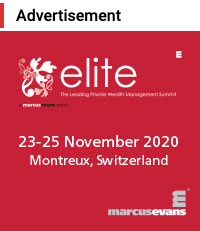Is Nuclear Power A Part of Your ESG?

Mayak, Russia (1950, 1957, 1967); Harrisburg, PA (the “Three Mile Island” accident, 1979); Chernobyl, North Ukraine (1986); Fukushima Daiichi, Japan (2011). These many areas represent the susceptibility of civilian nuclear use.
Do you favour investing in countries that support nuclear power, or those that prefer alternative CO2 friendly power?
Germany has decided to phase out nuclear power under the leadership of Angela Merkel. At the end of 2022, the last nuclear reactor in Germany, the power plant in Neckarwestheim, is due to go offline.
► Those countries that favor nuclear power are led by China, where 44 nuclear reactors are expected to go into operation within the next eight to ten years. The Middle Kingdom thus accounts for the majority of the reactors that are under construction or in the planning stage worldwide.
► In Japan, 114 of the 140 coal-fired power plants are to be taken off the grid by 2030. However, the share of nuclear power in the electricity mix is to increase from 6% today to 22% by 2050. Many of the 54 old nuclear reactors that were shut down after Fukushima for safety checks will be restarted. Let us be reminded that the Fukushima disaster was caused by an earthquake, and ranked 7 out of 7 by the International Nuclear Event Scale. The earthquake was naturally followed by a tsunami.
► In the Middle East, nuclear energy just getting started. The United Arab Emirates were the first Arab country to put a nuclear power plant into operation.
► The example of Great Britain shows that nuclear power has not been written off in Europe either. Boris Johnson has mini-reactors built, locally manufactured in the Rolls Royce factories. 15 of these so-called “small nuclear reactors” are scheduled to go online in the next nine years.
► In France, there are more operational reactors per capita than in any other country in the world.
 However, there is also the opinion of Dr. Anna Veronika Wendland. She is a former anti-nuclear activist who, in the wake of the climate debate and after years of research in various Russian and Western European nuclear power plants, radically changed her point of view. For her, consistent climate protection means the de-demonization of nuclear energy.
However, there is also the opinion of Dr. Anna Veronika Wendland. She is a former anti-nuclear activist who, in the wake of the climate debate and after years of research in various Russian and Western European nuclear power plants, radically changed her point of view. For her, consistent climate protection means the de-demonization of nuclear energy.
She states that compared to other industries or other techno-social systems such as aviation, high-performance medicine or automobility, these [nuclear] systems are the most highly secure system that we know in our industrial world.
“Before the decision to phase out, we had almost 30 percent nuclear power in the grid. That was almost CO2-free electricity generation. The exit meant the renaissance of hard coal and lignite*. That is why we are not making any progress with the CO2 targets. The exit from nuclear energy is therefore the life lie of German climate policy.
Dr. Wendland concludes, “My recommendation would be to reorganize the energy transition and reverse the sequence. In other words, we should first get out of coal and then only get out of nuclear energy when we see that we have large-scale industrial storage solutions for alternative energies. That is foreseeable.”
Someone seems to have forgotten to ask Dr. Wendland which does she think is worse: CO2 levels or nuclear waste.
Sun and wind energy are considered “unsecured” energy. The countries with the highest level of solar and wind electricity (data is 4 years old) are: Portugal (24,2%) followed by New Zealand (23.2%); Spain (22.3%); Germany (19.6%); Romania (17.2%); Italy (16.3). The United Kingdom and Belgium are tied (14%).
See more details of sun and wind energy at greenmatch.
And – there is still an unanswered question, still. If Germany is moving off of the nuclear market, with what are they going to replace it? Are they moving towards green, or are they going back to black?
*Lignite, often called brown coal, is a sedimentary rock formed naturally from compressed peat. It is considered the lowest rank of coal due to its low heat content, and is the coal that is most harmful to health.
Gabor Steingart contributed to this article.






